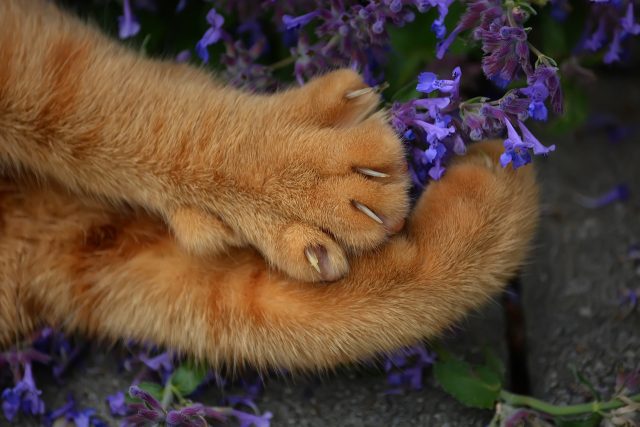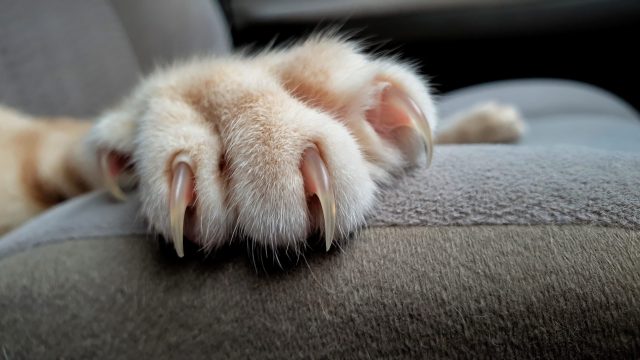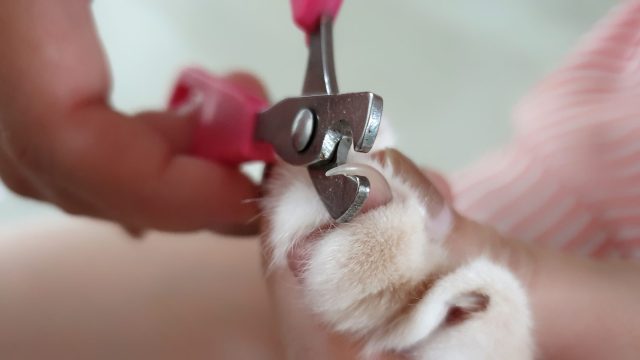Greetings, my pawsome human minions.
Forrest Wisewhiskers here, back again with more inside knowledge from the feline world.
As you’re reading this, I can only assume you’ve found the shed layers of your cat’s claws lying here and there about the house. First off, let me assure you your cat isn’t losing their murder-mitten status. The shedding of those perfectly shaped claw sheaths is just nature at work, keeping your kitty’s claws sharp and ready for action. But before we get into why cats shed their nails, let’s first talk about what makes claws so grand.

The Flex & Grab Power of Claws
Cat claws are an often feared mechanism of the cat, but these magnificent tools are far more than just weapons that can swat down a foe or a misbehaving human minion. They also serve as an invaluable aid in hunting, enabling me to capture and hold onto prey or sparkly tinsel balls. Additionally, my claws aid in climbing trees effortlessly, allowing me to reach great heights and escape danger.
And while it’s been quite some years since I needed to scale a tree outside, I can get up the cat tree in the living room in a flash. My mother is always impressed with my speed and agility. The magic of my claws also allows me to mark territory, as scratching on things leaves behind my scent so other cats know this area belongs to me.
But the wonder of claws doesn’t stop there, as the cat claw is a retractable wonder. It rests hidden within my paw, concealed by a sheath of skin and fur. When I require its assistance, I extend my nails outward with a simple flex of the muscles in my paw. This ability to retract and extend my claws at will is a marvel of evolution, granting me agility, precision, and versatility in all my activities. They, indeed, are a wonder.

The Anatomy of Cat Claws
Made primarily of a protein called keratin, my claws are similar to your human nails but far sharper and more durable. The claw is slightly curved, allowing it to hook onto various surfaces with ease. This curvature enables me to maintain a firm grip while climbing, leaping, or engaging in other acrobatic endeavors.
Attached to the base of the claw and housed inside the layers of keratin is the quick, a sensitive area rich in blood vessels and nerves. The quick is vital for the health of claws and serves as a source of nutrition and sensation. It also helps maintain the sharpness and strength of the claw. If the quick is injured, it can be painful and cause bleeding. So, take care when trimming your kitty’s nails. Nicking those quicks with trimmers hurts!

Why Do Cats Shed Their Claws?
When a cat’s claws outgrow the quick’s blood supply, the outermost keratin layers slough off, leaving behind a clean nail with a wickedly sharp point. This shedding of dull claw husks is a normal part of their growth and maintenance and is always at work in all eighteen of your kitty’s claws. And because scratching helps shed those outer claw layers, providing your cat with scratching posts or scratchers allows them to engage in their natural behavior and facilitate proper claw shedding. Scratching is an essential part of your cat’s claw and overall health.
RELATED: The 16 Best Cat Scratching Posts & Scratchers To Satisfy Natural Instincts
Environmental factors can also influence the rate of claw shedding. For example, cats that spend more time outdoors or engage in vigorous activities may shed their claws more frequently due to increased wear and tear. Additionally, the type of surfaces they scratch against can impact the shedding process. Rougher surfaces might aid in more efficient claw shedding. Regular trimming of claws may also be necessary to prevent them from becoming too long or sharp, which can lead to discomfort or accidental scratches.

RELATED: What To Know About Clipping Your Cat’s Nails
As a cat, my claws are an integral part of my being. They provide me with grace, power, and the means to navigate the world around me. Whether I am playfully batting at a toy, scaling a cat tree, or asserting my presence, my claws are always at the ready, serving as both a weapon and a tool for exploration. And because my claws work so hard, it’s no surprise Mom is constantly picking up those lost sheaths. So the next time you find a claw husk, take a moment and marvel at the wild wonder that is your feline.
And once you’re done hunting kitty claw husks, don’t forget to feed the cat.

